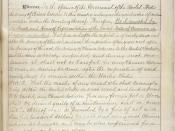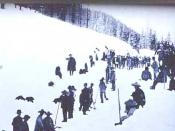Coming to America introduces the history of the waves of immigration to America from 1500 to the present. In a narrative populated with real people, Roger Daniels takes the reader from the first Spanish, French, and English migrants to the later arrivals of Africans, Germans, and Irish, followed by Swedes, Poles, Italians, and Eastern European Jews in the nineteenth and early twentieth centuries, to the Latin American and Asian immigrants of our own era. The birth of the US came because of Europeans that immigrated here for religious freedom. From those small settlements came towns and cities, built by immigrants. But not all migrated here for religious freedom. Many came on wishes for a better life or to pursue business deals. As early as 1610, Italian craftsmen were brought here to by the Virginia Colony to start the glass trade. So regardless of their drive, people have immigrated here since the beginning of the history of the United States and still continue to.
Since the first new settlers arrived in America several centuries ago, people have been coming to the United States for a variety of reasons: to find land to farm, to get an education or better job, to earn money to send home, to practice their religion freely, or to escape famine or war, just to name a few. Others came by force. Whatever the cause or reasons, this immigration is what made America the melting pot that it is today. It wasn't until the later part of the 1820's that the number of immigrants per year was over 10,000, and from that time on, the numbers kept growing. The first real bursts in immigration came in the 1840's and 1850's, when poor harvests forced people to leave Great Britain and Northern Europe. Most of them came to...


